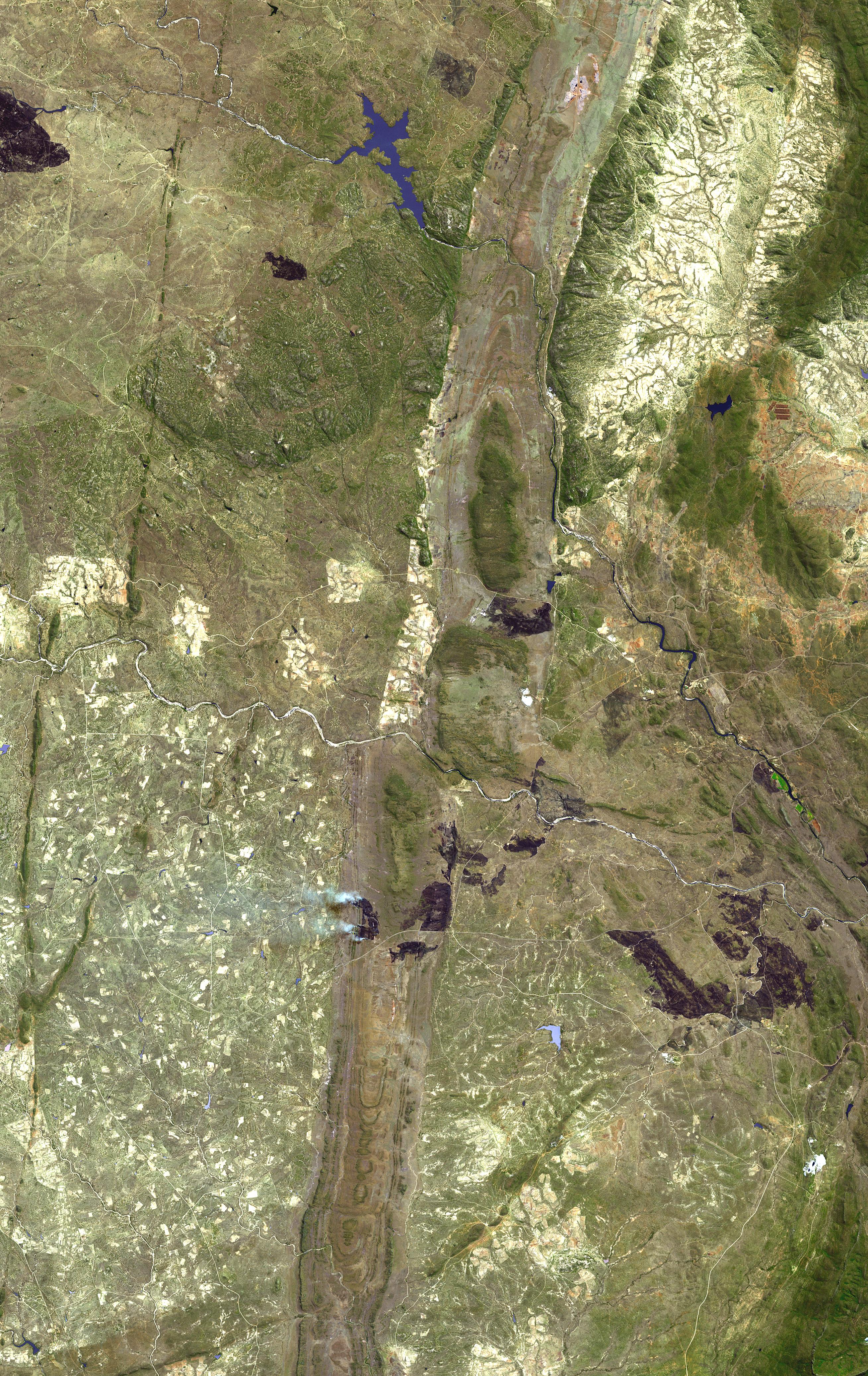|
Lalapanzi
Lalapanzi is a village in Midlands (Zimbabwe), Midlands province in Zimbabwe. It straddles the Great Dyke, a mineral-rich geological formation that runs north-south down the center of the country. The name is also applied to the areas surrounding the town. Built around the chromium mining business, with two of the largest mines operated by Lonrho (London Rhodesia Company), which has since given up its stake, and Zimasco (Zimbabwe Alloy and Steel Company). More recently, (starting in the 1990s) smaller, independent miners have accounted for larger volumes of the ore to leave the area. This has led to environmental problems as they are largely unregulated. Also has one post office, one very large police station, three clinics (two private, one state-run), one railway station, two primary and one secondary school. It has also been used as a dormitory town for the Sino-Zimbabwe cement company about 20 km west. However, since the commodity price collapse of the 1990s it has larg ... [...More Info...] [...Related Items...] OR: [Wikipedia] [Google] [Baidu] |
Great Dyke
The Great Dyke is a linear geological feature that trends nearly north-south through the centre of Zimbabwe passing just to the west of the capital, Harare. It consists of a band of short, narrow ridges and hills spanning for approximately . The hills become taller as the range goes north, and reach up to above the Mvurwi Range. The range is host to vast ore deposits, including gold, silver, chromium, platinum, nickel and asbestos. Geology and Soils Geologically the Great Dyke is not a dyke, but is lopolithic and Y-shaped in cross-section. It is a group of layered ultramafic intrusions that extend across Zimbabwe with a strike of about N20°E. The width of the intrusions vary from 3 to . The Great Dyke is unusual in that most ultramafic layered intrusions display near horizontal sill or sheet forms. The well-layered lower units of ultramafic rocks comprising the Great Dyke are locally overlain by erosional remnants of gabbroic rock. These mark the centres of the four s ... [...More Info...] [...Related Items...] OR: [Wikipedia] [Google] [Baidu] |
Midlands (Zimbabwe)
Midlands is a province of Zimbabwe. It has an area of and a population of 1,614,941 (2012). It is home to various peoples. Located at a central point in the country, it contains speakers of Shona, Ndebele, Tswana, Sotho and Chewa, as well as of various other languages. Gweru, the third-largest city in Zimbabwe, is the capital of the province. Midlands Province contains Kwekwe, a city of considerable mining and manufacturing industries, in which also the Sable Chemicals Trust maintains a presence. Geography Districts Midlands Provinces is divided into eight districts: * Chirumhanzu * Gokwe North * Gokwe South * Gweru * Kwekwe * Mberengwa * Shurugwi * Zvishavane Local government The Provincial Administrator oversees all eight districts in the province, each district having its own district administrator. District Administrators work with local authorities in their respective districts. Local authorities have their own Chairmen (mayors for municipalities). These urban cou ... [...More Info...] [...Related Items...] OR: [Wikipedia] [Google] [Baidu] |
Zimbabwe
Zimbabwe (), officially the Republic of Zimbabwe, is a landlocked country located in Southeast Africa, between the Zambezi and Limpopo Rivers, bordered by South Africa to the south, Botswana to the south-west, Zambia to the north, and Mozambique to the east. The capital and largest city is Harare. The second largest city is Bulawayo. A country of roughly 15 million people, Zimbabwe has 16 official languages, with English, Shona language, Shona, and Northern Ndebele language, Ndebele the most common. Beginning in the 9th century, during its late Iron Age, the Bantu peoples, Bantu people (who would become the ethnic Shona people, Shona) built the city-state of Great Zimbabwe which became one of the major African trade centres by the 11th century, controlling the gold, ivory and copper trades with the Swahili coast, which were connected to Arab and Indian states. By the mid 15th century, the city-state had been abandoned. From there, the Kingdom of Zimbabwe was established, fol ... [...More Info...] [...Related Items...] OR: [Wikipedia] [Google] [Baidu] |

